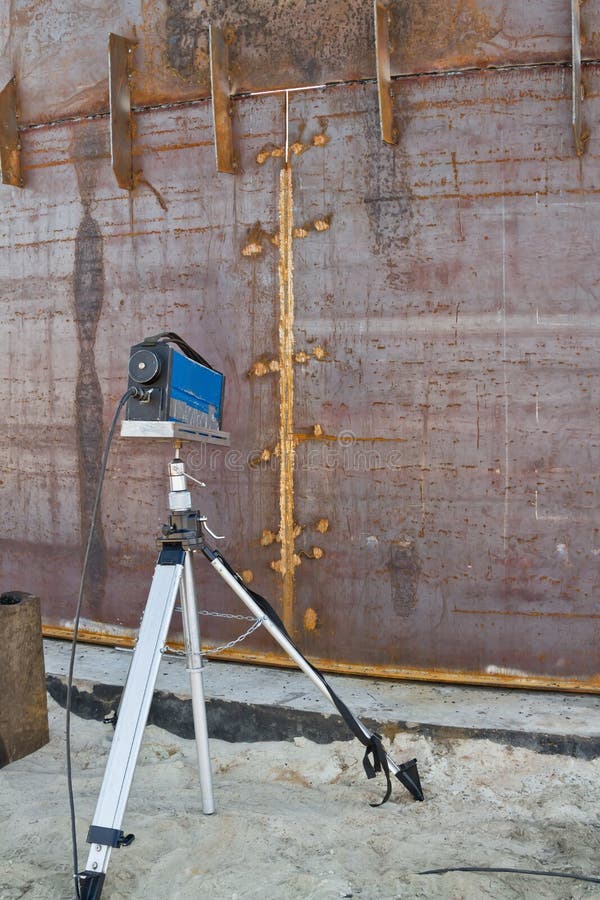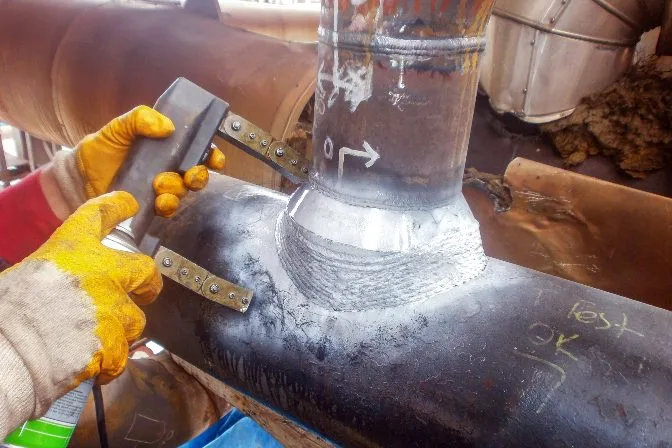
Comprehending the Importance of Rigorous Tank Welding Assessment Processes in Averting Failings and Enhancing Life-span
In the world of industrial procedures, the relevance of rigorous container welding evaluation procedures can not be overemphasized. By implementing numerous inspection approaches, companies can spot defects early, thus avoiding pricey consequences and expanding the life of their storage space containers.
Significance of Welding Inspections
Acknowledging the critical duty of welding evaluations in keeping structural stability, these procedures guarantee that welds fulfill established requirements and requirements - Tank Welding Inspection. Efficient welding examinations are critical in the building and upkeep of tanks, as they directly influence the longevity and security of the frameworks. By identifying potential shortages, such as inappropriate techniques or material flaws, inspections minimize the danger of devastating failings
Welding inspections incorporate various approaches, consisting of aesthetic exams, non-destructive testing (NDT), and assessments of welding procedures. Each technique offers to confirm the top quality and conformity of welds with sector regulations, therefore protecting both employees and environmental rate of interests. Regular assessments promote a culture of responsibility and quality within the labor force, making sure that all group members stick to best practices.
Moreover, these inspections add to the total lifecycle monitoring of containers by determining wear or deterioration early at the same time. By resolving these issues proactively, companies can expand the functional life-span of their possessions, eventually leading to set you back financial savings and improved reliability. In summary, the importance of welding examinations can not be overemphasized; they are necessary for making sure security, longevity, and conformity in storage tank construction and upkeep.
Common Reasons For Tank Failings
Understanding the common sources of storage tank failings is vital for preventing catastrophic incidents and ensuring the longevity of storage space systems. One prevalent root cause of container failure is deterioration, which can substantially compromise the structural integrity of containers over time. Ecological factors, such as exposure to dampness, chemicals, and temperature variations, can increase this procedure.
Another important factor is incorrect welding strategies, which may cause problems like fractures or incomplete joints. These problems can endanger the tank's strength and bring about leaks or ruptures. Furthermore, poor maintenance practices can lead to undiscovered deterioration, ultimately enhancing the threat of failure.
Style imperfections, including inadequate thickness or bad product selection, can also contribute to storage tank vulnerabilities. Furthermore, functional variables, such as overfilling or exposure to extreme pressures, can strain the tank beyond its desired limits.
Secret Examination Techniques
Efficient assessment strategies play an important function in reducing the risks related to tank failures. A comprehensive approach to tank welding examination entails numerous crucial methods, each developed to identify potential issues and make certain architectural integrity.
Visual assessment remains the initial line of protection, enabling inspectors to recognize surface area anomalies such as cracks, deterioration, or imbalance. This method is commonly supplemented by non-destructive screening (NDT) methods, which are essential for analyzing weld high quality without compromising the storage tank's stability.

Additionally, magnetic particle screening (MPT) and dye penetrant screening (DPT) work for discovering surface area flaws in ferromagnetic products and non-porous surface get more areas, respectively. Each strategy has its strengths and constraints; therefore, a mix of approaches is usually used to attain comprehensive evaluation results.
Benefits of Rigorous Examinations
While the prompt expenses of rigorous assessments may seem overwhelming, the long-lasting benefits significantly exceed these first investments. Carrying out thorough evaluation refines not only improves the integrity and security of storage tank structures yet additionally minimizes the risk of disastrous failings that can cause substantial monetary losses and ecological injury.
Rigorous evaluations assist recognize potential issues early in the welding process, enabling prompt rehabilitative actions that stop costly repairs or replacements down the line. This positive technique cultivates a society of quality control, where adherence to best practices ends up being implanted in operational procedures. Normal examinations add to raised property long life, as they make sure that storage tanks stay in ideal condition throughout their lifespan.
Additionally, the documentation created from these examinations works as a useful resource for maintenance planning and efficiency examinations. This data-driven technique can likewise enhance operational efficiency, bring about lowered downtime and boosted productivity. Eventually, strenuous assessments not only safeguard the architectural stability of tanks yet additionally supply considerable financial benefits, strengthening the notion great site that buying high quality assurance is a wise choice for any company included in tank procedures.
Regulative Standards and Conformity
Regulatory criteria and compliance are important parts of storage tank welding inspection procedures, as they establish the structure for making certain safety and security and top quality in operations. Conformity with these requirements not just reduces threats yet additionally improves the overall stability of bonded structures. Numerous organizations, consisting of the American Culture of Mechanical Designers (ASME) and the American Petroleum Institute (API), give guidelines that determine appropriate practices for welding, examination, and testing.
These requirements mandate using qualified personnel, the implementation of extensive inspection procedures, and adherence to certain welding treatments. By aligning with regulative needs, organizations can make sure that their containers meet the needed safety and security and performance requirements, therefore reducing the possibility of tragic failures that can result in considerable economic losses and environmental damages.

In addition, governing compliance fosters a culture of responsibility and constant renovation within the welding and manufacture sectors (Tank Welding Inspection). Regular audits and evaluations guarantee that methods continue to be aligned with advancing standards, thereby promoting long-lasting integrity and operational efficiency. Inevitably, adherence to regulatory requirements not just secures possessions however likewise improves the life expectancy of welded tanks, ensuring they serve their intended objective effectively in time
Conclusion
Finally, rigorous tank welding examination procedures play a crucial function in avoiding failures and extending the life-span of storage space structures. By recognizing possible deficiencies with numerous inspection techniques, organizations can minimize dangers related to tank honesty. The execution of these evaluations promotes a culture of quality control, resulting in enhanced possession durability, lowered maintenance expenses, and boosted operational effectiveness. Following regulatory requirements further highlights the relevance of these inspections in preserving safety and security and integrity within the industry.
Comments on “Just How Tank Welding Inspection Stops Future Structural Failures”